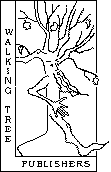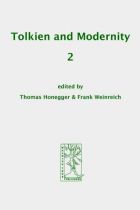Tolkien and Modernity 2
Thomas Honegger and Frank Weinreich (editors)
Cormarë Series No. 10

<--previous | all publications | next-->
how to buy this item
Concepts of ‘Love’ in The Silmarillion and The Lord of the Rings
With Beren/Lúthien, Arwen/Aragorn and Sam/Frodo Tolkien has created three literary couples that have more in common than scholarship is often willing to acknowledge. Beren/Lúthien are generally read as the paradigmatic couple of lovers in The Silmarillion – validated by Tolkien’s own marriage – and used as a foil for Arwen/Aragorn in The Lord of the Rings. Frodo/Sam, however, are constantly interpreted as exponents of friendship – another concept of forming couples. Yet when Luhmann’s model that conceptualises love as communication, not emotion, is applied to all three couples, one finds that Sam/Frodo may be read as a variant of the Beren/Lúthien model even more easily than Arwen/Aragorn. The essay concludes that, notwithstanding all differences, these three couples must be understood as ‘lovers’.
PATRICK BRUECKNER is a student of German Medieval Literature, Women’s Studies and Sociology at the University of Potsdam. He is working on aspects of gender in the works of J.R.R. Tolkien. He held joint seminars with Judith Klinger on ‘Tolkien and the Middle Ages’ at the University of Potsdam. His publications include: ‘Zur Konstruktion ‘richtiger’ Weiblichkeit in J.R.R. Tolkiens Lord of the Rings’ (Masquerade and Essence, Death and Desire. The construction of ‘correct’ femininity in J.R.R. Tolkien’s The Lord of the Rings) in Hither Shore 2 (Yearbook of the German Tolkien Society).
The Lord of the Rings and ‘Late Style’:
Tolkien, Adorno and Said
This paper aims to relate The Lord of the Rings to the concept of ‘late style’ used by Theodor Adorno and Edward Said. This theory can be used to point out essentially modern elements in Tolkien’s work, placing him within a modern(ist) context. Late style is about ‘lost totality’, melancholy, and death. Both Adorno and Said note as its central characteristics a discarding of formal conventions, tension, and a desire to appear self-generated. Late style’s fragmented utterances ultimately end in silence.
These traits can all be found in Tolkien’s novel. The Lord of the Rings uses a highly unconventional form: it presents itself as a collection of fragmented historical documents, hiding its author, and is supposed to read as if it had not been written, just as Adorno states that late Beethoven is “supposed to sound as if it had not been composed”. The predominant themes of the book are exile, cultural decline, and mortality: after the departure of the last ship, those who remain in Middle-earth must endure what Arwen calls “the Doom of Men [...]: the loss and the silence”. The text itself is all that is left of Middle-earth’s ‘lost totality’.
This tension between the fantastic and its loss is central to Tolkien’s own ‘late style’; his works have the power Said states is particular to late style, namely “to render disenchantment and pleasure without resolving the contradiction between them.” Thus The Lord of the Rings subscribes not to an outmoded literary aesthetic, but to a modern one central to the twentieth century.
MARGARTET HILEY is a PhD student at the University of Glasgow, working on aspects of Modernism in the works of C.S. Lewis, J.R.R. Tolkien and Charles Williams. She has published several articles on the Inklings and fantasy in general. She teaches at the University of Glasgow and at the University of Regensburg, Germany. Margaret also holds an M.A. in musicology and her further research interests include Early Music (particularly lute music) and the relationship between music and literary texts.
An Introduction to the Dynamics of the Intertraditional Dialogue in The Lord of the Rings:
Aragorn’s Heroic Evolution
This paper attempts to disclose the different stages in Aragorn’s evolution as a character with reference to how he internalises the narrative traditions encountered on the road to Minas Tirith. In this, the analysis is a statement on how Tolkien’s approach to these traditions differs from modernist expressions of what Frye, in his theory of modes, terms “ironic myth”.
MARTIN SIMONSON took his degree in English Philology at the University of the Basque Country in Vitoria, Spain, and holds a Ph.D. in English Literature from the same university. His doctoral thesis focused on the narrative dynamics of The Lord of the Rings. He has contributed with essays on Tolkien in Reconsidering Tolkien (2005), and in Tolkien Studies 3 (2006). He is currently head of the English department at Colegio San Viator in Vitoria.
A Study of Heroes in the Works of J.R.R. Tolkien
It is posited that in the dislocation between literature’s example and reality’s experience, the Great War created a backlash against the linguistic and ideological form of heroic literature, eliciting a sense of ‘disenchantment’ for concurrent poets and writers. Heroes in Tolkien’s fictions are examined as an attempt to reinstate these older frameworks of heroism, especially at levels of sophrosynic achievement or Christian mimesis. Discussion covers the historical context of the Great War, models of heroism upon which Tolkien drew, Tolkien’s own theory regarding the links between the primary world of history/reality and the secondary world of literature, and the crossing of these issues to elicit the heroes of his fiction. Exploration of Tolkien’s heroes illustrates the way in which Tolkien attempts to escape the prevailing disenchantment of his age, but concludes that his heroes are ultimately symptomatic of the time in which he wrote.
ANNA SLACK graduated from the University of Cambridge in July of 2005 with a BA (Hons.) in English Literature, having overturned the rigid canon of the department by submitting a highly successful dissertation on Tolkien’s works for her final exams. Anna spent two years editing the tri-annual journal of the Cambridge Tolkien Society, Anor, and a year as the society secretary. She helped pioneer and partook in the acclaimed performance of the BBC Radio Adaptation of The Lord of the Rings in aid of the National Trust, and was invited to lecture on Tolkien’s heroes at the recent conference in Birmingham, Tolkien 2005, where she also performed in various Tolkien-related sketches. She is currently working on a paper for the forthcoming Walking Tree publication The Silmarillion: 30 Years on. She is particularly fascinated by eucatastrophe and the application of Tolkien’s critical thought to his work, and hopes to return to academia in the future to study the works of Tolkien and Lewis together in this and other contexts as the basis for a PhD.
March 13th and the Riddles of Shelob’s Lair
Experiences of Other Time form an important theme in Tolkien’s works. In The Lord of the Rings, this theme is of particular significance for the process of transformation that Frodo undergoes in the course of the Ring-Quest, and which eventually takes him across the sea to Valinor. Read in this context, the crisis at Cirith Ungol amounts to a passage through death and a transcendence of finite, linear time, achieved jointly by Frodo and Sam. As a close reading can demonstrate, the presence of Shelob on the boundary of Mordor causes a suspension of linear temporality and allows for a different experience of time: one that opens the view towards the timeless present of Valinor. This essay examines the temporal and narrative complexities of the Cirith Ungol-episode alongside their implications for Frodo’s ‘road to Faërie’.
JUDITH KLINGER Ph.D. is lecturer for German Medieval Studies at the University of Potsdam (Germany). Her dissertation deals with concepts of identity in the Prosa-Lancelot. She is currently working on a project in Gender Studies.
Homepage: http://www.uni-potsdam.de/u/germanistik/mediaevistik/1_anfang.htm.
The Passing of the Elves and the Arrival of Modernity:
Tolkien’s ‘Mythical Method’
Tolkien’s relationship with modernity – and in particular with literary modernism – is ambiguous and contradictory. As critics have noticed, Tolkien’s work shares many of the formal characteristics of modernist literature while simultaneously rejecting most of its central ‘ideological’ tenets. Furthermore, the years between 1913 and 1920, which saw, among other things, the cataclysm of the First World War, proved not only formative for many modernist writers, but provided also the background against which Tolkien’s mythology took shape. Authors such as T.S. Eliot or James Joyce, whose The Waste Land (1922) and Ulysses (1922), respectively, are considered to be the most important and accomplished examples of modernist writing, use the ‘mythical method’ to express the modern world’s disillusionment and rupture with the past. Their references to mythical matter are often allusive, ironic and playful and demonstrate the inadequacy of traditional ‘mythic’ narratives and high diction to imbue modern life with coherence and meaning. Tolkien, too, employs a ‘mythical method’ to come to terms with the challenges of modernity, yet his use of ‘mythical matter’ aims at smoothing the break without glossing over the feeling of loss and sorrow. Tolkien endeavours to come to terms with ‘modernity’ by means of providing the lost context(s) to the fragments of modern existence so that he – and his readers – arrive in modernity not via ironic disenchantment but by commemorating of what has been lost.
THOMAS HONEGGER holds a Ph.D. from the University of Zurich and is the author of From Phoenix to Chauntecleer: Medieval English Animal Poetry (1996). He has co-written a study on the moral dimension in Tolkien’s narrative work (Eine Grammatik der Ethik 2005) and edited numerous volumes on Tolkien and medieval language and literature. He has furthermore written about Chaucer, Shakespeare, and mediaeval romance and is currently involved in a large-scale project for a web-based interdisciplinary encyclopaedia of animals in medieval literature. He teaches, since 2002, as Professor for Mediaeval Studies at the Friedrich-Schiller-University Jena (Germany).
Homepage: http://www2.uni-jena.de/fsu/anglistik/homepage/Honegger3.htm.
The Shaping of ‘Reality’ in Tolkien’s Works:
An Aspect of Tolkien and Modernity
One of the key terms in the history of literature from the beginning until today is ‘reality’. The way reality is shaped and interpreted in a work is an important criterion for recognizing whether the author is working on contributing to the cultural task of his time or whether he refuses to do so. This essay places Tolkien, on the one hand, in the context of a broad literary current which opposes the conventional concept of modernity and partially overcomes it. On the other hand it investigates some of Tolkien’s central literary means in order to position him in relation to the ‘modern’ interpretation of reality within this literary-cultural current. It remains to be seen that Tolkien’s way to create reality not only follows progressive literary programmes of earlier authors but also leads to new territory by means of his narrative technique – despite a superficially conventional narrative approach. He thereby confronts our time with a concept of reality that requires further investigation.
HEIDI KRUEGER, born 1944 in Potsdam, studied Philosophy and German Philology in Tubingen and Zurich. She worked as lecturer at Växjö University (Sweden) and taught numerous seminars on literature and philosophy. Next to her philological and philosophical education, she also underwent a training as director for theatre and opera and has translated operas and dramas from Norwegian and Finnish. Since 2003 she has been increasingly specialising in Tolkien and the research of his works as an aesthetical phenomenon and has, to date, published two essays on this topic.
See also Tolkien and Modernity 1 (Cormarë Series No. 9)
279 pages, Walking Tree Publishers 2006, Cormarë Series No. 10, Editors: Thomas Honegger and Frank Weinreich, ISBN: 978-3-905703-03-0.

<--previous | all publications | next-->
how to buy this item

More on Tolkien and Modernity 2

terms and conditions
visitors since 23.10.06
last updated 23.10.06

